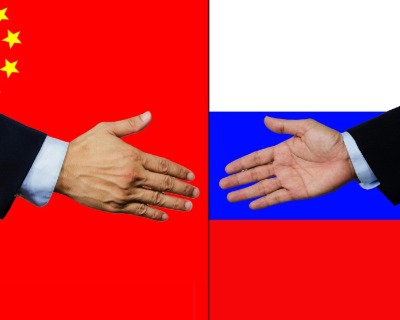Risky business: Marriages of convenience and hybrid trade wars in Russia and Eurasia
TXF and Coriolis Technologies’ country risk index investigates the trends in trade weaponization in Russia and Eurasia. Here, Russia’s ‘hybrid war’ trade strategy and it’s marriage of convenience with China’s trade tactics are investigated by Rebecca Harding, CEO of Coriolis Technologies. This is the second in the series of seven insights.

TXF: What's standing out in terms of the country risk indices in Eurasia and Russia?
Rebecca Harding (RH): There are several things that are worrying us in this region at the moment. The first is Russia. It has a well-documented hybrid warfare approach to its strategic trade across the across the world at the moment. It's in developing arms trade particularly with China. So there's an unholy alliance developing between China and Russia which is a very strategic marriage of convenience. They don't like each other very much. But we're seeing that very evident in the trade data now.
We're seeing as well within the Eurasia region countries like Belarus are actually becoming more weaponized in terms of dual-use goods and in terms of arms trade as well. The Eurasia region itself is actually not terribly high risk. So if you look the amount that they trade in terms of arms, because they come from a background where they've come out of the Soviet Union and they're now building their independence and they're trying to be very peaceful, particularly countries like Kazakhstan, for example, it means that they don't have that high level of aggression and they're not particularly high on our arms ranking risk index. But every single one of them has seen an increase in their regime-type threat at the moment.
We're seeing an increase in that because they are stuck between the tensions between Russia and the US, China and the US and then conflicted in terms of where they want to go in relation to one belt one road [BRI]. There's actually a conflict in the region going on about the region's identity as a trading block almost. Belarus is dominated by Russian interests. That nation has become more risky over the last six months and we predict that that would continue.
The final thing that I think is really important in this region is that we're beginning to see visible tensions brewing between Azerbaijan and Armenia. And what's really interesting is that both of those countries have increased their military trade with other countries around - Russia and China and even the US as well. So we're seeing a tension around Nagorno Karabakh area and region, a territorial dispute that's visible in the statistics.
TXF: What about Russia in terms of its outbound trade now, what are we seeing with that?
RH: Russia's interesting because explicitly [President] Putin has stood up at events saying that he's totally in favour of increasing agriculture exports and agriculture imports to try to make it absolutely clear that Russia is not involved in any kind of strategic trade at all. But visibly what we're actually seeing is an increase in trade exports of military-related goods, dual-use goods and arms and ammunition. And one of the most interesting things that we're seeing is that this is not classified. So Russia has this hybrid war mentality. It also has this spirit of implausible deniability.
So if something looks implausible, let's say, it's able to deny it. And that's been part of its strategy so far. Now what we're seeing is data around commodities not elsewhere specified. So a lot of the goods that come out to Russia if they're strategic, ie arms or oil and sanctions and embargo busting, then those are going to be classified as unclassified because that that's the way in which Russia goes about trading a lot of these things. But we're also seeing visible arms trade as well. And the dual use goods are going into the Middle East. We're seeing arms trade going to and from China.
Russia is exporting across countries like Georgia. And we're seeing those threats in the region beginning to build. So a country like Georgia on our index has actually increased in terms of its risk as well. And Belarus, obviously I've already said that Belarus is increasing its levels of arms trade. So there's a general level of influence that we can see across the Eurasian region and beyond and in the Middle East, that's part of Russia's sort of strategic influence/strategic position in the world. What's really interesting about this is that we haven't seen analysts particularly talk about Russia's strategy and Russia's hybrid war in trade terms and yet we can definitely see it in the data.
TXF: Coming back also to the Belt and Road Initiative [BRI], is that butting up against Russia's interests at any point in the region? Is the BRI in evidence at all in the region?
RH: In the region BRI is definitely in evidence. So you can see increases in electronic goods between China and Kazakhstan, China and Turkmenistan. You can see infrastructure trade going in and obviously visibly and anecdotally there's something happening in the region. There's a lot of investment and there's a lot of debt to China as well.
So we're seeing we're seeing the region itself want to be able to engage and be the centre of that BRI. Does that but against Russia's interests itself? No I don't think it does because Russia and China are being pushed to a position where they have to pivot towards each other anyway. That's happening because of US politics and so Russia is there as the kind of partner of China in a strategic marriage of convenience. As I said earlier they're not going to find it that easy to work together all the time because they have different models of socialism. On the other hand it's very convenient for them to work together. And this is beginning to manifest itself both in terms of energy trade but also in terms of military trade as well.





